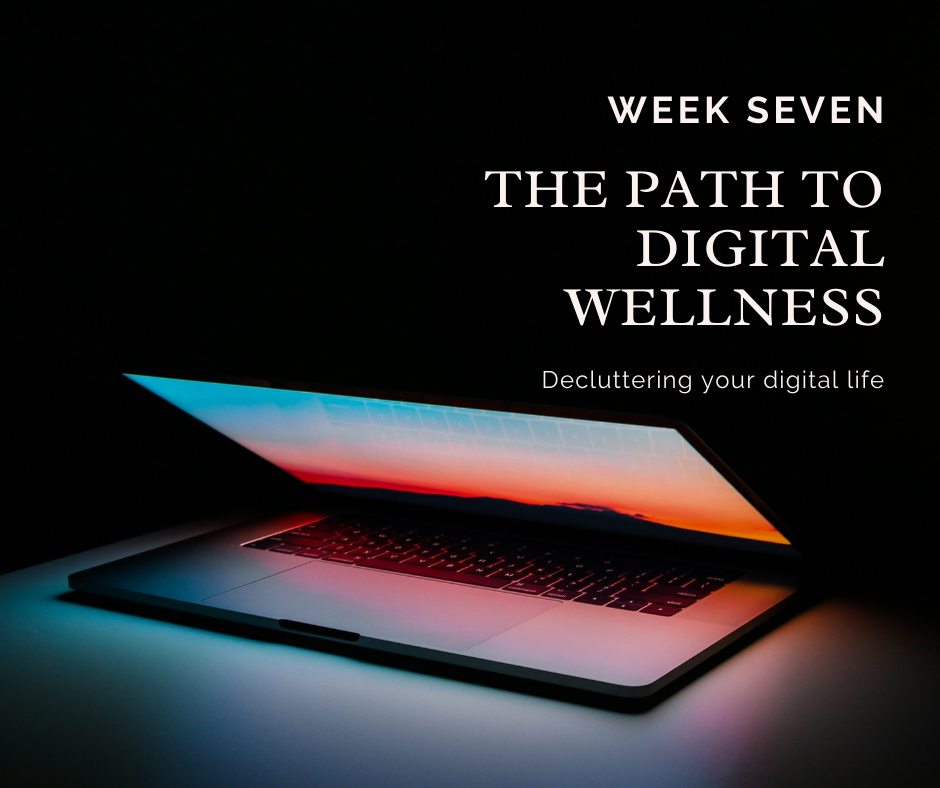Time to shift gears
The past six weeks, I’ve guided you through a process of assessing your current relationship with technology, identifying areas that may have become problematic. To recap, we talked about…
- Identifying your short and long term life goals.
- Identifying how technology can help you reach these goals.
- Identifying how technology might also be preventing progress.
- Quantifying the scope of that problem.
- Assessing how the problem is impacting your mind.
- Assessing how the problem is impacting your body.
After all that work, (Seriously, props to you if you did all those exercises!) you should have a pretty good overview of what’s out of balance and/or needs attention in your life.
(If you don’t, that’s OK too. Keep hanging with us!)
This week, we‘ll move on to the good stuff… how do you fix the problem?
A move toward minimalism
The first step is to start rebuilding your relationship with technology from the ground up. To do this, we’re going to take some cues from the book Digital Minimalism by Cal Newport.
As it explains in the book, “Digital Minimalism is a philosophy of technology use in which you focus your online time on a small number of carefully selected and optimized activities that strongly support things you value, and then happily miss out on everything else.”
The exercises of the past six weeks, (weeks 1 & 3, in particular) should have helped you get a better sense of your goals and the technological obstacles standing in the way of achieving them.
Moving forward, we’re going to treat those obstacles as clutter and start to clear them out of your way so you can better focus on the things that really matter.
Let’s clean house
As Newport recommends in his book, to adopt a more minimalistic digital lifestyle, you should begin by removing optional technologies from your life for a period of 30 days.
He recommends conducting this “digital declutter,” (sometimes also known as a “digital detox” — my preferred term) rapidly, rather than gently phasing out tech or changing behaviors over time.
“Gradually changing your habits one at a time doesn’t work well — the engineered attraction of the attention economy, combined with the friction of convenience, will diminish your inertia until you backslide toward where you started.”
— Cal Newport
This isn’t a process you should attempt overnight.
As Newport also mentions in the book, (and you may have already learned from experience) simply diving headfirst into a digital declutter or detox without having a clear game plan first is often counterproductive.
It’s a process similar to making a big change in how you eat. For example, you shouldn’t simply cut all sugar from your diet before you’ve figured out what other foods you’re going to consume, bought some groceries to make sugar-free dishes, or figured out how you’re going to address the cravings that may result.
We’re going to take the same approach here and spend the next two weeks planning for your detox/declutter, with the goal of kicking it off on Saturday March 7.
This week’s exercise
This week I’m inviting you to simply get clear about what a digital declutter/detox might look like for you.
- What tech do you think it may be helpful to take a 30 day break from? Newport recommends cutting all optional technologies in your life, (i.e. any technology that will not cause your life any harm if it is removed). Since you’re already done some thinking about this topic the past few weeks, (particularly in Week 4) I might suggest focusing specifically on the tech you’ve identified as being most problematic for you. The choice is yours.
- How can you continue to bring the idea of intention and mindfulness into your daily technology use (which we talked about in weeks 5 & 6) in the coming weeks as you prepare to make a bigger 30 day change?
Next week we’ll continue planning the logistics of your declutter/detox by setting some rules and choosing some tools to help you stay focused.
I look forward to seeing you then. Thank you for stopping by!
Want to participate in this eCourse?
1. Continue to drop by my blog or Medium account each Saturday where you can read the weekly post at your leisure, or…
2. Subscribe to this email list and I’ll send you a post each Saturday.
I’d love to hear your thoughts on this course as we go. Feel free to leave comments on any of the posts or email me at jen@jenkane.com if you’d like to share something privately.






